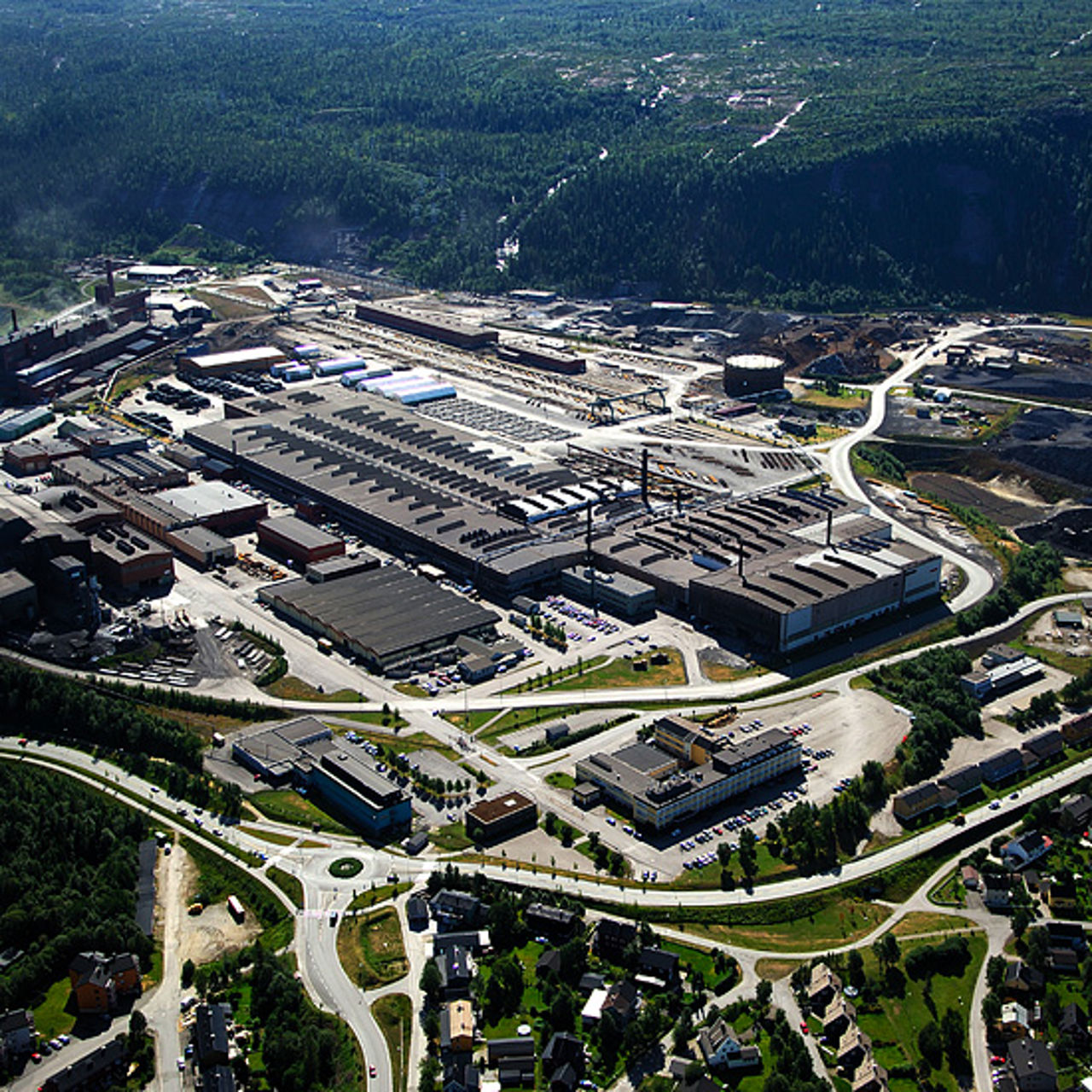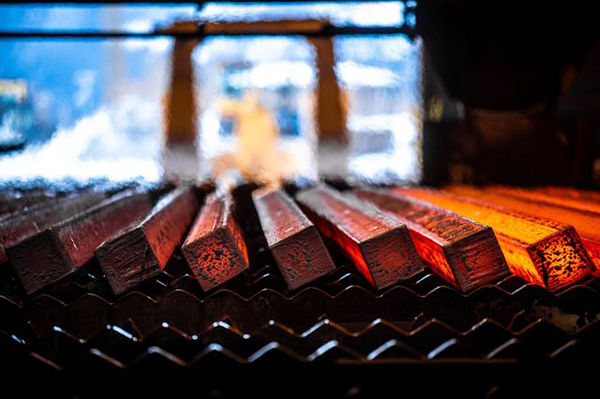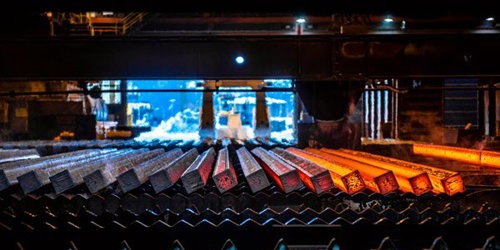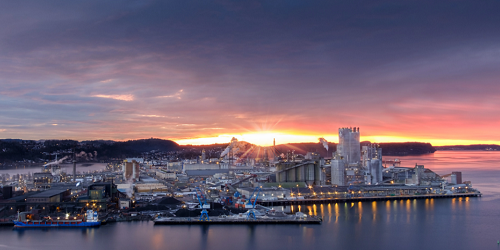At the CELSA reinforcement steel mill in Mo i Rana in Norway, 700,000 tonnes of scrap iron from the Nordic region are recycled annually.
That is the equivalent of two Eiffel Towers a week ...
... and it results in large emissions of CO2.
Marianne Fineide, head of Power Plant Group Rana in Statkraft.
Mo i Rana offers beautiful scenery, abundant natural resources and an emerging success story in renewable energy. With hydropower from Statkraft, CELSA's steel will change colour from grey to green, and the key to this transition is hydrogen.
Green steel
CELSA Armeringsstål AS is one of many companies working with Statkraft to create a future based on renewable energy.
The steel mill in Mo i Rana in Nordland County already receives renewable energy from Statkraft's local hydropower plant, and the water from the power plant is also used to cool the steel to give it the right quality. But certain parts of the production process cannot be electrified directly using hydropower, and natural gas must be used to generate high enough temperatures in the rolling furnace.
Statkraft is working on a solution where the gas can be replaced with green hydrogen.
"If CELSA switches to hydrogen, the steel mill can reduce its annual CO2 emissions in the rolling process from 60 000 tonnes to zero," says Marianne Fineide, head of Power Plant Group Rana in Statkraft.
See how Statkraft plans to make green hydrogen using hydropower:
Can hydrogen play the leading role?
"Steel forms the skeleton of modern society. This metal is everywhere, is extremely durable, and can be recycled endlessly," says Petter Skatland, rolling mill manager at CELSA's steel mill in Mo i Rana.
Dressed in protective clothing, he is standing inside the plant where smoke and sparks emanate from large melting furnaces. Ear protectors must be worn to keep out the noise from deafening drilling, loud beeping from machines, and the loud banging caused by heavy metal being unloaded. It's the sound of scrap metal being recycled for new life.
With 344 employees, the CELSA plant in Mo i Rana is not only a leading producer of reinforcement steel in the Nordic region, but also Norway's largest recycling company – and with a positive environmental profile. But how can that be, when the steel industry is one of the world's largest sources of CO2?
The steel industry requires an enormous amount of energy and high temperatures in the melting and rolling process. Can the current use of natural gas as an energy source be replaced by a green alternative that provides a high enough temperature for this process? Higher than it is possible to achieve directly from hydropower?
Together with Mo Industripark, Statkraft and CELSA have been working for several years to see how hydrogen can become the green solution. If the plans are successful, the rolling process at the steel mill has the potential to become completely emission-free.
"We hear constantly about the green shift, but we're responsible for the practical implementation of it," says the rolling mill manager proudly.
Hydrogen is the most common element in the universe. It is also the lightest and has the simplest atom.
Liquid hydrogen is, for example, used by NASA as rocket fuel.

-
Depending on the production method, various types of hydrogen can be made: blue, green, turquoise, brown or grey. Green hydrogen is produced by electrolysis of water, an environmentally friendly and completely emission-free process using renewable energy.
-
CELSA Armeringsstål (pictured) is located in the industrial park in Mo i Rana in Nordland County. Statkraft has several hydropower plants in the Rana area. The plan is to utilize the energy not only to provide electricity for households and businesses, but also to produce green hydrogen that can be used as environmentally friendly fuel in CELSA's steel rolling mill.
-
Statkraft plans to send hydrogen in pipes to CELSA's factory in Mo Industrail Park, where it will be burned and able to provide a high enough temperature for the process of heating and rolling out steel.
World-leading hydrogen hub
Statkraft, CELSA and Mo Industripark have big plans for the future. They want to establish a hydrogen hub at Mo, with the aim of being able to deliver hydrogen to new customers in the industrial park, for example as fuel for heavy construction machinery, trucks and cargo boats.
But how long will it take to reach the finish line?
"We are working towards the project starting to deliver hydrogen in the fourth quarter of 2024," says Statkraft's Marianne Fineide, but adds:
"This depends on CELSA not having to bear the entire extra cost during a transition period when the company incurs higher energy costs than if it continued to use fossil energy. How the transition period is to be compensated determines whether the project can be realised."
The project moved a step forward when Enova, a state enterprise owned by the Norwegian Ministry of Climate and Environment, awarded NOK 121.4 million for a new roller furnace adapted to the use of hydrogen.
"The rolling furnaces are not only an important step in achieving the goal, but will also put Mo in a world-leading position in technology for the green transition," says Susanne M. Nævermo-Sand, responsible for sustainability and strategy in CELSA Nordic and project manager for the hydrogen venture at CELSA Armeringsstål AS.
"The technology that can deliver the power needed for a rolling process based on 100-per-cent hydrogen doesn't exist in the world today. We will therefore become a leader in green transition technology when this is in place. With hydrogen as fuel in the rolling mill in Mo i Rana, we can eliminate our own emissions from the rolling process, which will reduce the total CO2 emissions from the production process in Mo by around 60 per cent. This will be a solid step forward in the green shift," she says.
The process requires extreme innovative power from everyone involved.

New green energy technologies
If the vision of a steel rolling mill with zero emissions in Mo is realised, Norway will take a leading position in the development of green technology. CELSA can then deliver recycled steel with a lower carbon footprint, which will be an excellent contribution in the fight to reduce climate emissions.
"Hydrogen will then play a key role in creating the zero-emission society of the future. It's important for Statkraft to collaborate with industries that develop and scale new green energy technologies," says Marianne Fineide.
The collaboration with CELSA therefore fits in well with Statkraft's commitment.
"If we can achieve large-scale deliveries of green hydrogen to industry and heavy transport, we've succeeded in one of the most important measures to decarbonise industry and realise major emission cuts," she states optimistically.
To be successful, it must be profitable to choose climate-friendly options.
"And it must be expensive to pollute," she adds.

"By collaborating with such a large pioneering customer like CELSA, we can build a hydrogen plant that is large enough to drive costs down."





